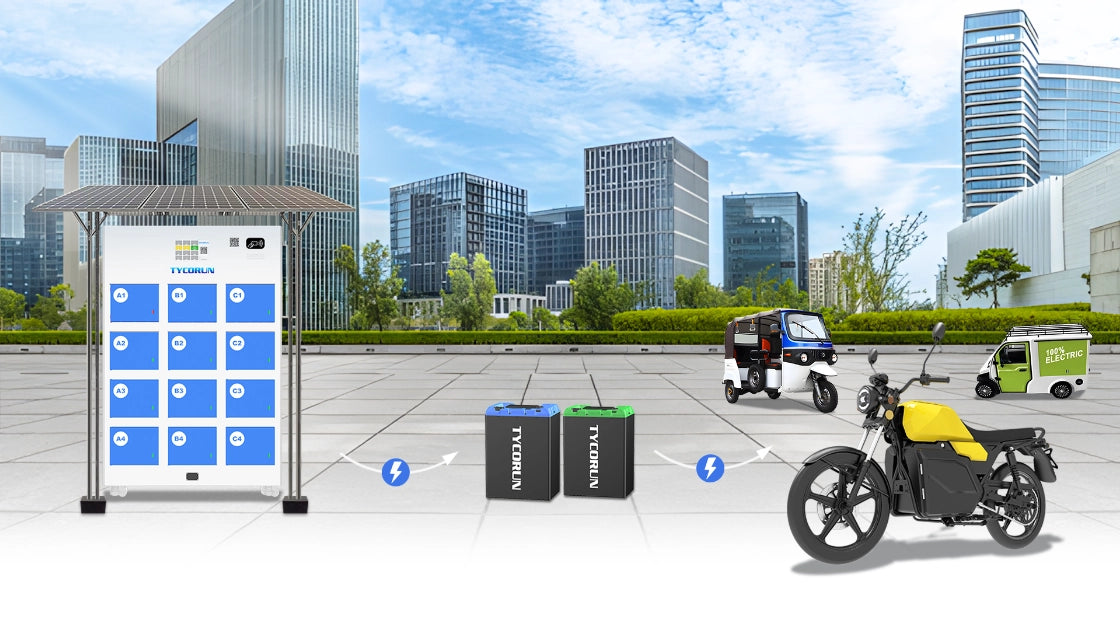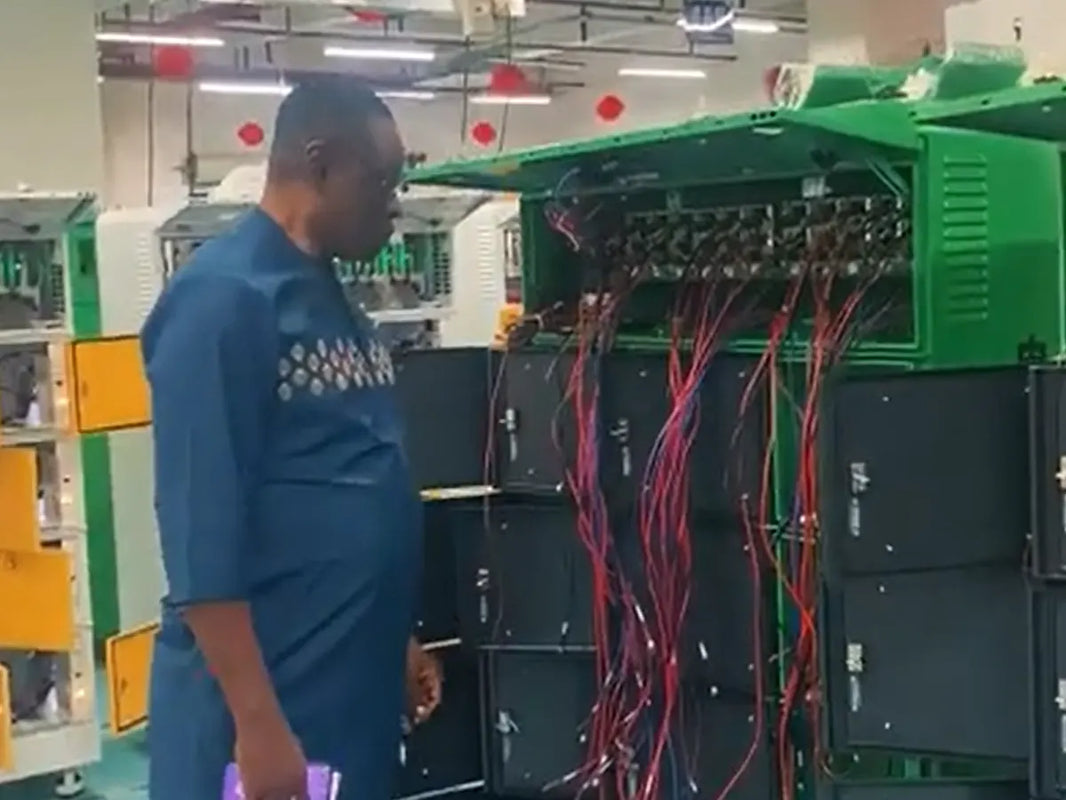
Main content:
Why Discharge a Battery?

Many users ask, "Why do we need to discharge a battery?" In reality, battery discharge is more than just a way to use electricity; it plays a key role in battery maintenance and management:
Detecting Battery Health
Discharging a battery is the most intuitive way to test its health. By discharging a battery under controlled conditions, we can measure its capacity, internal resistance, and voltage variation. If the battery's capacity decreases rapidly within the specified discharge time, it may indicate battery degradation. Discharge curves can also be used to identify any cell inconsistencies or abnormalities.
Preventing Capacity Fade
When lead-acid batteries are subjected to long periods of floating charge or no discharge, the electrolyte will stratify and the plates may sulfate. Moderate discharge can activate the plates, delay sulfation, and maintain stable capacity.
Preventing the "Memory Effect"
Although modern lithium batteries are largely free of the "memory effect," nickel-cadmium (Ni-Cd) and nickel-metal hydride (Ni-MH) batteries still experience this problem. If not fully discharged over time, the battery capacity will decrease. Proper discharge helps restore the battery's true capacity.
Three Main Types of Battery Discharge
Natural Discharge
Natural discharge refers to the gradual loss of battery capacity over time when the battery is not connected to any load. Lithium batteries have a low natural discharge rate, approximately 1% to 3% per month. Lead-acid batteries discharge naturally more rapidly, especially in high-temperature environments. This is an unavoidable part of the battery's chemical reaction. Long-term neglect can be harmful, potentially leading to deep discharge, reduced capacity, and even failure.
Operating Discharge
This is the most common discharge method. When you use an electric vehicle, laptop, UPS, or energy storage system, the battery releases its stored energy to power the device. This is called operating discharge.
Capacity Test Discharge
This is a test method that discharges the battery under controlled current and voltage conditions to measure the total amount of charge it can release, thereby determining the battery's actual performance and health.
Different Cutoff Voltages for Different Battery Types

Lithium Iron Phosphate Battery
The cell cutoff voltage is 2.5 V, with some manufacturers recommending 2.8 V as a safer cutoff voltage. The cutoff lithium-ion battery voltage of a 12 V battery pack (4 strings) is approximately 10 V to 11.2 V.
Ternary Lithium-ion (NCM/NCA) Battery
The cell cutoff voltage is 2.75 V to 3.0 V. The cutoff voltage of a 12 V battery pack (4 strings) is approximately 8.25 V to 9 V.
Lead-acid batteries
The safe depth of discharge (DoD) for a 12 V lead-acid battery pack made of six series cells should not exceed 80–90%, which corresponds to a minimum voltage of approximately 10.5 V.
Nickel-cadmium Batteries (Ni-Cd)
For Ni-Cd cells, the minimum safe voltage per cell is 1.0 V. When configured in a 12 V pack with ten cells connected in series, the overall cutoff voltage is around 10 V.
Nickel-metal Hydride Batteries (Ni-MH)
A single Ni-MH cell should maintain at least 1.0 V to prevent damage. Therefore, a 12 V pack composed of ten cells in series has a recommended cutoff voltage near 10 V.
How to Discharge a Battery
Before you start, knowing how to discharge a battery correctly ensures that the entire process remains controlled and safe.
Prepare the Tools

Multimeter/Voltmeter
A multimeter or voltmeter is used to monitor battery voltage in real time to ensure that voltage fluctuations remain within a controllable range. For multi-cell battery packs, it is recommended to monitor the voltage of each cell simultaneously to prevent over-discharge of individual cells, thereby protecting battery life and safety.
Load Device or Resistor
A load device or resistor provides a stable discharge current for the battery. Professional testing can also use a discharge meter or electronic load device. These devices can precisely control the discharge current and record discharge data, making the test more reliable and scientific.
Protective Equipment
During the discharge operation, protective gloves and goggles must be worn to prevent accidental short circuits, liquid leaks, or sparks. If the operating environment is hot, high-temperature-resistant gloves are recommended to ensure effective protection even under extreme conditions.
Temperature Monitoring Equipment
During the discharge process, the battery generates a certain amount of heat, especially at high discharge rates. If conditions permit, an infrared thermometer or temperature sensor can be used to monitor the battery temperature in real time to prevent overheating and ensure that the battery operates within a safe temperature range.
Set the Discharge Rate
The discharge rate of a battery refers to the ratio of the actual discharge current to the rated capacity of the battery, typically expressed as the C-rate. A key part of how to discharge a battery is setting the right C-rate to protect its lifespan. It's generally recommended to set the discharge rate between 0.2C and 0.5C. For example, for a 100Ah battery, a 0.2C discharge current is 20A, and a 0.5C discharge current is 50A.
Calculation Method:
Discharge Current (A) = Battery Rated Capacity (Ah) × Discharge Rate (C)
100Ah Battery × 0.2C = 20A
100Ah Battery × 0.5C = 50A
Excessive current will accelerate temperature rise and affect battery life; too low a current will extend the test time.
Monitor the Discharge Process
During the discharge process, observe voltage changes and temperature in real time. When the battery voltage approaches the cutoff voltage, terminate the discharge immediately. For multi-cell batteries, ensure voltage balance to prevent over-discharge of individual cells.
Allow the battery to rest after discharge
After discharging, do not charge immediately. Allow the battery to rest for a period of time (usually about 30 minutes) to allow the voltage and temperature to stabilize. This is a crucial step in evaluating a battery's true performance.
Battery Discharge Safety Guidelines

Avoid Short-Circuit Discharge
Short-circuiting can cause a sudden surge of current, leading to overheating, swelling, and even explosion of the battery cell. Therefore, during discharge, a load device must be used to control the current and avoid directly shorting the positive and negative terminals of the battery to ensure safe operation.
Avoid Over-Discharge
When learning how to discharge a battery, avoiding over-discharge is one of the most important safety rules.
Lithium Iron Phosphate Batteries (LiFePO₄)
Discharge is relatively safe, with a low risk of thermal runaway. However, care should still be taken to avoid deep over-discharge to extend the lithium ion battery life. During discharge, the battery pack should be balanced to prevent individual cells from running low. High-rate discharge also generates heat, requiring adequate ventilation to maintain battery performance and safety.
Nternary Lithium Batteries (NCM/NCA)
Nternary lithium batteries have high energy density but are sensitive to over-discharge. Even slight over-discharge can lead to capacity loss or even cell damage. During discharge, voltage and cell balance must be carefully monitored to prevent partial over-discharge of individual cells.
Lead-acid Batteries
Lead-acid batteries are not suitable for deep discharge. Frequent, high-volume discharges accelerate plate sulfation, permanently reducing capacity. During discharge, control the current, avoid overheating, and maintain ventilation in the operating environment to prevent the generation of small amounts of gas. Proper discharge depth and balanced management are crucial for extending service life.
Nickel-Cadmium (Ni-Cd) Batteries
Ni-Cd batteries have a long cycle life and are well-tolerant to overdischarge, so occasional deep discharges do not seriously damage the battery. However, they are prone to a "memory effect," where prolonged shallow discharges can reduce effective capacity. Therefore, moderate deep discharges can be used to restore capacity during discharge, but frequent discharges exceeding the recommended range are not recommended.
Nickel-Metal Hydride (Ni-MH) Batteries
This type of battery is more sensitive to deep discharge, and excessive discharge can damage battery capacity. High-rate discharges can cause temperature increases, so ensure adequate heat dissipation during discharge. Compared to Ni-Cd batteries, frequent deep discharges are less recommended to extend cycle life and maintain stable performance.
Maintain Good Heat Dissipation
The battery generates heat during discharge, especially at high rates. The operating environment should be well ventilated. Use a fan or heat dissipation device if necessary to prevent overheating that could affect performance or safety.
Keep Away from Flammable Materials
The discharge area must be dry, well ventilated, and away from flammable and explosive materials. A fire extinguisher or dry powder fire extinguisher should always be available to handle emergencies and ensure the safety of personnel and equipment.
Conclusion
Understanding how to discharge a battery safely protects its performance and longevity. By following simple steps and safety precautions, you can ensure your battery remains reliable and efficient.
Related articles: AGM battery self discharge rate, battery discharge capacity, battery discharge warning















